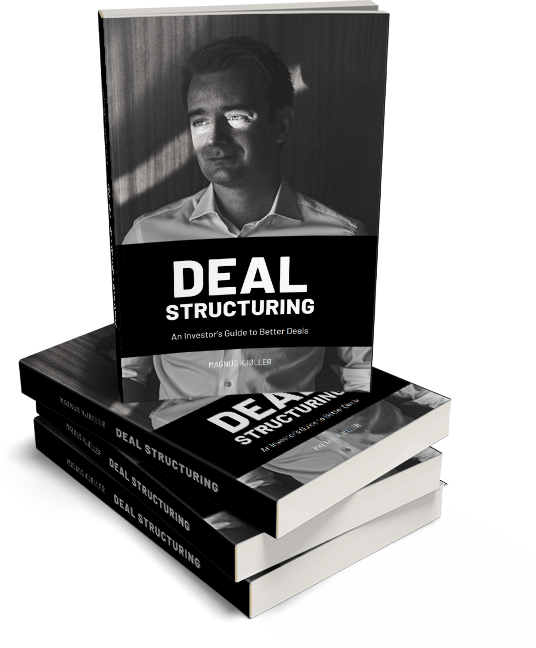Question & Answer
How Can Investors Protect Themselves from Downside Risks?

Investing in startups is inherently risky. While the upside can be substantial, downside protection is just as crucial. Smart investors structure deals to mitigate risks, ensuring that even if things don’t go as planned, their capital isn’t entirely at the mercy of the market.
The best downside protection strategies depend on the deal structure. Whether investing via debt, equity, or hybrid instruments, investors have several tools to reduce exposure and safeguard their interests.
Asset-Backed Security
When debt financing is involved, investors often secure their investment against the company’s assets. This ensures that if the company fails, investors have a claim on tangible resources.
Common forms of security:
- Physical assets (machinery, inventory, real estate).
- Intellectual property and patents.
- Accounts receivable (for companies with steady cash flow).
Secured debt structures often include covenants restricting how the company can operate, ensuring that assets are not sold or leveraged without investor approval.
Milestone-Based Investments
For cash-for-equity investments, one of the best ways to manage risk is through milestone-based, or tranched, investments. Instead of providing the full capital upfront, investors release funds in stages, contingent on the company achieving specific targets.
Common milestones:
- Hitting revenue or profitability targets.
- Securing key partnerships or customers.
- Reaching product development goals.
- Expanding into new markets.
This structure ensures that investors only commit additional funds if the company is performing as expected, reducing the risk of capital being wasted on an underperforming business.
Liquidation Preferences
In equity investments, liquidation preferences dictate who gets paid first in the event of a company sale or liquidation. Investors can structure deals to ensure they recover their investment before founders or common shareholders see any returns.
Types of liquidation preferences:
- 1x non-participating: The investor gets their original investment back before any remaining funds are distributed.
- 1x participating: The investor gets their money back first and then also participates in the remaining distribution as if they were a common shareholder.
- Multiple of investment: Some investors negotiate a 2x or 3x return before common shareholders receive payouts.
This mechanism ensures investors don’t lose everything if the company is sold at a lower-than-expected valuation.
Convertible Instruments
Convertible notes and SAFEs (Simple Agreements for Future Equity) offer built-in downside protection by delaying valuation discussions. These instruments often include:
- Valuation caps: Investors receive equity at a pre-agreed discount if the company raises funds at a higher valuation later.
- Discount rates: Converts into equity at a lower price than new investors in the next round, providing an immediate return.
- Interest accrual: In the case of convertible notes, the principal grows over time, increasing the investor’s stake at conversion.
These mechanisms help ensure that early investors aren’t overpaying for equity in a volatile market.
Preferred Shares
Preferred shares give investors additional protections that common shareholders don’t have. These protections can include:
- Dividend rights: Guaranteed payments before any dividends go to common shareholders.
- Anti-dilution protection: Adjusts an investor’s share price if the company raises capital at a lower valuation in the future (known as a “down round”).
- Voting rights: Allows investors to influence key company decisions, reducing the risk of mismanagement.
By structuring deals with preferred shares, investors can secure better terms while maintaining downside protection.
Revenue-Based Financing
In revenue-based financing, investors receive a percentage of the company’s revenue instead of waiting for an exit event. This provides returns earlier in the investment cycle, making it a lower-risk option.
Benefits:
- Investors get paid based on actual performance, not speculative growth.
- No need for an IPO or acquisition to see a return.
- Founders retain ownership while still securing growth capital.
This structure is particularly useful for businesses with strong, predictable revenue but uncertain exit opportunities.
Clawback Provisions
Investors sometimes include clawback clauses, which allow them to recover funds in specific situations. These can be triggered by:
- Fraud or misrepresentation by the founders.
- Failure to meet contractual obligations.
- Misuse of funds or gross mismanagement.
Clawbacks are not always easy to enforce, but they serve as a deterrent against reckless behaviour.
Board Seats & Control Rights
One of the simplest ways to reduce downside risk is to stay actively involved. Investors often negotiate for board seats or observer rights to monitor the company’s performance closely.
Common investor protections:
- Veto rights on major financial decisions.
- Approval rights for future fundraising rounds.
- Mandatory reporting and transparency requirements.
By maintaining oversight, investors can spot red flags early and intervene before problems spiral out of control.
Blended Structures
At Kjøller, my investment firm, we rarely rely on a single risk-mitigation strategy. Instead, we structure deals using a combination of:
- Milestone-based investments to align capital with performance.
- Convertible instruments for flexibility in uncertain valuations.
- Preferred shares to secure investor rights.
- Asset-backed security where appropriate.
This blended approach ensures that we protect our downside while giving companies the capital they need to grow.
No investment is risk-free, but structuring deals properly can significantly reduce exposure. Whether through milestone-based investing, liquidation preferences, convertible instruments, or revenue-sharing models, investors have multiple tools to protect their capital.

Deal Structuring
Buy the book today and dive into practical techniques that empower you to get started immediately, navigating transactions efficiently and maximizing your success in minimizing cash requirements.
In this book, you will:
- Be introduced to the fundamentals of deal structuring
- Learn 19 proven deal models for structuring deals
- Discover 39 key elements of deal nuances
- Access 32 actionable clauses for your term sheets
- Explore 9 specific deal structures
- Receive 257 pages of invaluable insights
- Gain the distilled expertise of 20 years